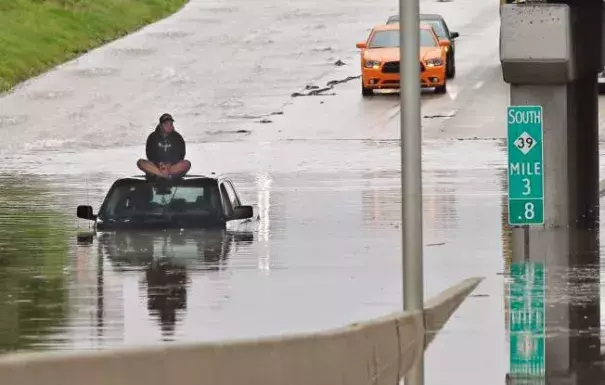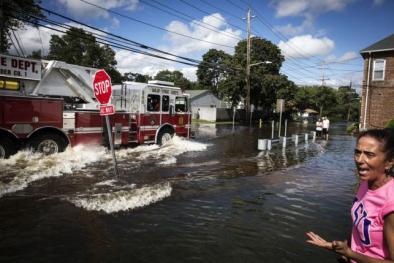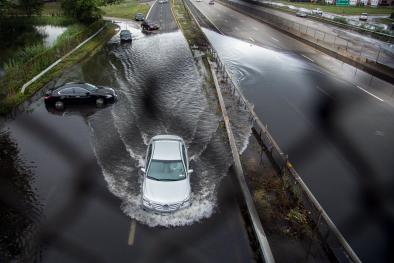Record Rainfall Across Eastern US 2014
In recent years, the heaviest rainfall events have become heavier and more frequent across most of the United States, and in November 2014 a storm consistent with this trend brought historic floods and record rainfall to the Eastern US.

Potent storm brings historic floods and record rainfall
The record rainfall event that struck much of the Eastern US in 2014 began on Monday, November 3, when Detroit experienced severe floods resulting in two casualties, and saw its second-rainiest day in history, with 4.57 inches. On Tuesday, the storm headed for the Mid-Atlantic where Baltimore also experienced devastating floods and its second-rainiest day since measurements were first taken in 1871—with 6.3 inches of rain reported. On Wednesday, the heavy rains moved to the Northeast where Long Island received more rain in one day than it would normally see in an entire summer, with the town of Islip setting a new 24-hour precipitation record at 13.57 inches. Then on Wednesday night and Thursday morning, the storm moved further north where Maine also experienced severe flooding and power outages with the city of Portland receiving 6.44 inches.
The climate context of record precipitation and flooding in the Midwest and Northeast
Between 1958 and 2010, the Northeast saw a 71 percent increase in the amount of precipitation falling in the heaviest events, while the Midwest saw a 37 percent increase.[1] The U.S. National Climate Assessment attributes this increase in heavy events to warmer air, which can hold more water vapor than cooler air.
Cities in the Northeast are also at greater risk of floods due to sea level rise
The risks associated with sea level rise are greatest during tropical storm surges—like those that inundated the coastal Northeast during Hurricanes Irene and Sandy—but low-pressure systems over the continents, or “extratropical storms,” can also produce storm surges that threaten coastal communities.[2] During the November 2014 storm, the National Weather Service issued a coastal flood advisory for many states in southeastern New England, including Massachusetts and Rhode Island.







